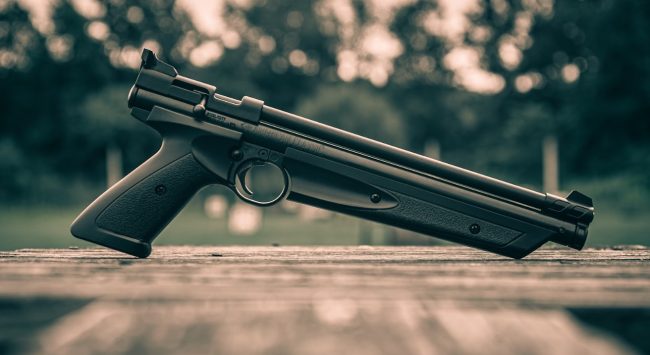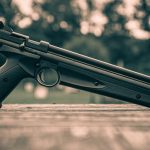Today, we’re embarking on a journey to understand the intricate mechanics of pump-pneumatic airguns. While our previous articles have shed light on the workings of PCP airguns, CO2 airguns, and spring and gas-ram powered airguns, it’s helpful to grasp the unique features of pump-pneumatic airguns. So, let’s begin our exploration.

Similarities
If you’ve been following our other articles, you’ve probably noticed many similarities between airgun power plants. They all compress ambient air pressure to a point where it can effectively move a pellet down the barrel. Some systems, like spring and gas ram airguns, do this nearly instantly via a piston, creating high-pressure air as the piston compresses the ambient air in the pressure chamber. CO2 airguns use liquid CO2, which generates about 900 PSI when used optimally. PCP airguns rely on onboard cylinders filled with high-pressure air released as needed for each shot.
While CO2 and PCP airguns use a valve system that acts as a gatekeeper for the stored high-pressure air or CO2, pump-pneumatic airguns take a different approach. They also have a valve, but that’s where the similarities end. This distinction is key to understanding the unique mechanics of pump-pneumatic airguns.
Nearly all PCP airguns are filled with a hand pump, tank, or compressor before each shooting session. The stored air can be used across multiple shots until the pressure in the onboard cylinder is no longer sufficient. Pump-pneumatic airguns have the air compression system (the pump) integrated into the rifle. But it’s only good for one shot at a time. More on that later.
The Basic Differences
Pump-pneumatic airguns share characteristics of both spring guns and CO2 and PCP airguns. Spring guns use all their “power” for each shot. That power is generated each time the piston is released as the shooter pulls the trigger. There’s nothing left in the compression chamber for the next shot, which means that the shooter will need to recock the gun each time.
Pump-pneumatic airguns also dump all their air at once. When the shooter pulls the trigger, the hammer strikes and opens the valve, and all the pressurized air in the air reservoir is released at once. Unlike PCP and CO2 airguns, the shooter will need to “Pump” air back into the cylinder to take another shot. Some pump-pneumatic airguns, like the Beeman P17, operate with one pump, whereas others, like the Crosman Pumpmaster, operate from 3 to 10 pumps.
How the Pump Works
Pump-pneumatic airguns have an onboard “hand pump” that utilizes a one-way valve, a high-pressure cylinder, and a valve. When you “pump” the airgun up, you fill the air cylinder like a bike tire. The air is forced into the chamber and is prevented from coming back out by the one-way valve. When the air cylinder is filled to the desired pressure, the shooter needs only to fire the gun to release the hammer, which strikes the valve, releasing the air and firing the pellet.
Imagine if you manually filled the plenum on a regulated PCP for each shot. In many ways, that’s exactly what you are doing with a pump-pneumatic airgun. You are just using an integrated pump vs. a tank or another external method.
Benefits and Limitations
Generally speaking, pump pneumatic airguns are very affordable, which is one major reason for their continued popularity. They also deliver all the ease of shooting and accuracy of PCPs without the need for expensive compressors or tanks. So why aren’t all airguns multi-pump airguns? While they certainly have their benefits, they also have limitations. PCPs operate at a much higher pressure than your typical pump pneumatic airgun. Even guns that can take up to 10 pumps only achieve a fraction of the velocity and energy of even the most basic PCP, and you need to put in a lot of work with each shot, which is another thing you don’t have to face with PCP Airguns.
Anything Else?
Some companies have sought to combine the power and performance of a PCP with the convenience of a pump-pneumatic airgun. The Air Venturi Aspen is a good example. Available in .177, .22, and .25, the Aspen has an onboard air cylinder like a PCP but also has an integrated high-pressure pump. So the shooter can fill the cylinder to 300 bar without needing extra gear. The Aspen gets multiple shots per “fill” and can be topped off anytime with the integrated hand pump. While it’s rather bulky, it really is a great system.
That’s a Wrap
We hope you’ve enjoyed our series, which features the various airgun types and how they work. If you have more questions, please don’t hesitate to give us a ring. We are always here to help.
